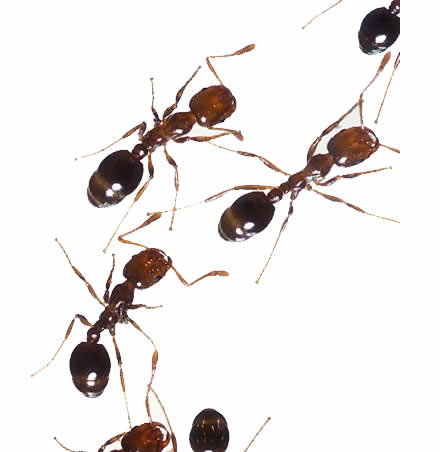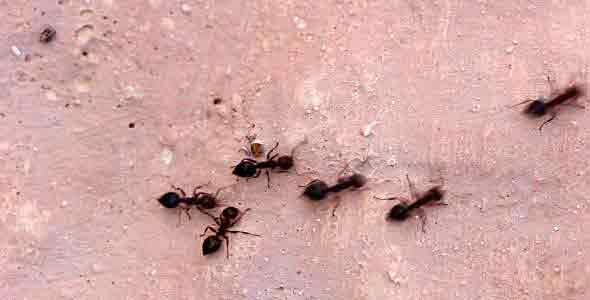Ants - One of the most common pests in Sydney
If you need help with a pest problem, feel free to consult our experts. Chat now or call (02) 8007 4666 to talk to our pest exterminators!
When it comes to ants, we tend to have mixed feelings about them. While we tend to love them and admire them for their hard work, social skills and their ability to adapt to their environment, we pretty much hate them when we find them inside our homes or workplaces.
Ants can also be a nuisance in agriculture when they attack crop seedbeds or transport aphids and coccids that are harmful to crops. Don't let ants invade your property. Talk to our team today, and we'll discuss how to deal with ants on your property.






Tell us your problem
FREE QUOTE
Information About Ants
We watch them admire how they do their work and remove dead animals and insects from the environment. Of course, this is when they are outside of our living areas. Things change rapidly when they cross the border into our homes. No matter how you feel about ants, much time has been spent studying their behaviour and studying how to get rid of an ant infestation. Continue reading to find out more about ants.
What are ants?
Ants are social insects belonging to the order Hymenoptera (Superfamily Formicoidea, Family Formicidae) and bees and wasps. Most species in these groups are known as social insects as they tend to live in colonies and have the highest levels of communication. Communication is achieved through odour which plays a vital part in territorial and reproductive behaviour. Ants use pheromones to leave trails which other ants can then follow. Ants have antennae and mandibulate mouthparts. Most ant, bees and wasp species have a powerful sting that can hurt pretty bad.
Every ant species is a social species and has several different castes, namely:
- fertile females (which are often called queens)
- males
- sterile female workers
All sterile females can be divided into two soldier castes: major soldier caste and minor soldier caste.
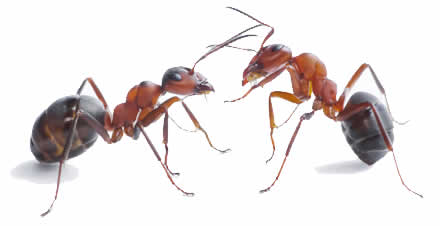

Ants Pest Control Sydney
How do ants reproduce and start a colony?
Ants undergo a complete metamorphosis starting from when the queen lays the first eggs in a small underground chamber. From these white eggs, larvae hatch, and after pupation, the adult castes emerge.
Female and males are typically hatched at a fixed time of the year, but these may vary from species to species. When both the males and females are winged, there might occur a mass nuptial mating flight. After the mating has taken place, males die, and females get rid of their wings and find a suitable location to start a new colony.
These flying ants have a high mortality rate, which is basically very convenient for us because, otherwise, we would be neck-deep in ants.
Ant Pest Infestation
The majority of the native ant species in Australia are not considered pests. However, ant species that were introduced in the country are a cause for concern. The most common ant species considered as a pest are fire ants.
Fire ants make their nests in decaying wood and can cause further destruction. Although most ants stay outdoors, many can still find their way indoors and build nests in places such as roof voids, wall cavities, inside window screens, and behind bathroom tiles—basically, ants like the same places as cockroaches.
Because of their nesting habits, ants often leave piles of gritty matter on flat surfaces, including window sills. If you inspect these piles up close, you'll discover that they often contain dead ants. No matter how hard you clean these piles, they will continue to reappear as long as there are ants in the area.
Another issue for ants is that they can make their way inside pantries or food containers. Ants would consume any food you leave out in the open.
If you're suffering from an ant infestation, we recommend that you talk to our Sydney pest control experts.
How to identify ants?
Ants are typically black, brown, red and yellow in colour and can vary from 1 mm to 3.0 mm. Ants are usually classified based on colour and size. For example, ants can be classified as small brown ants or black ants. Ants can also be identified by checking their food preferences. Some ants are protein food eaters or sugar eaters. Whatever way you choose to categorise them, it is essential to effectively identify them to implement a lasting pest control solution.
Identifying common black house ants
- White-footed black house ants or, as they are often called, black household ants in Victoria (Technomyrmex albipes). These ants nest both indoors and outdoors. They are 2.5 mm to 3.0 mm in size and have a black colour with pale amber tarsi. Their diet consists of almost everything, but they prefer sugary foods.
- Blackhouse ant (Ochetellus glaber), an ant species that normally build nests under the ground or in decaying wood. These ants will also make their nests in roof voids and similar building cavities. Their colour is shiny black. Their size is typically 2.0 mm to 3.0 mm. Their diet is mostly sweet food.
Why is it important to identify Queen Ants?
Ant colonies that have only one queen can be dealt with easily. Ant species with multiple queens and nests, such as Argentine ants, Odorous house ants, and Pharaoh's ants, can present a much more difficult task. This is why identifying the ant species is of utmost importance. Many pest controllers do not bother carefully identifying the ant species and class them as black or brown. This is why proper identification of ant species is essential and should be done before doing anything else.
Which areas of the house can you usually find ants?
- Kitchens – benchtops, skirting boards, window sills, behind and inside cupboards, the backside of the refrigerator where the motor is located, kitchen taps and wall tiles and under the sink.
- Interior areas – skirting boards, carpet edges, window sills, power points (watch out for electricity), electrical cables, taps and tiles. Look for piles of grit, sand and dead ants as these usually form directly near the ant activity;
- Exterior areas – ants can be anywhere as they can be trailing near fence rails, paths, in the lawn or the garden.
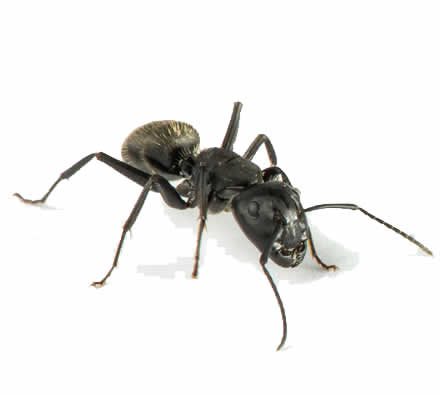

A common ant found in Australia
Sydney Ant Species
Today, around fifteen thousand known ant species and subspecies in the world, from which a tenth of those can be found in Australia. Ants are found in every Australian state and territory. Most of them can be found in bushlands and rainforests.
- Coastal brown ants (Pheidole megacephala), an ant species usually found in buildings, along paths and rocky areas, throwing out piles of soil and debris. They are approximately 1.5 mm to 3.0 mm in length and have a light brown or brown colour. Their diet consists mostly of proteins and fats. Coastal brown ants have minor and major soldier castes. A major soldier ant relatively has a larger head.
- Brown house ants (Doleromyrma darwiniana) are ants that have similar nesting habits as coastal brown ants. They are brown in colour and can grow from 2.0 mm to 3.0 mm in size. They release a distinct odour when crushed because of the formic acid in their bodies. Their diet consists mostly of high protein food.
- Pharaoh's ants (Monomorium pharaonis) are rare ant species in Australia but are very common in Europe and the USA. These ants often build their nests inside buildings as they prefer warm locations such as heating ducts. Their colonies are huge and can have multiple queens. These queens ants tend to leave their nests and start new colonies at the first sign of trouble, such as insecticides. Pharaoh´s ants are usually 1.5 mm to 2.0 mm in size and have a yellow-brown or dark brown colour. Their diet consists of protein food, fatty and sugary food.
- Argentine ants (Linepithema humile) is an ant species that first arrived from South America. They are known as serious pest and were the target of many eradication campaigns since the 1950s. These ants nest in exposed soil or hide in plants or logs. They are 1.5 mm to 3.0 mm in size and have a light brown or brown colour. They can be very aggressive and drive out other ants and other animals from their living/nesting areas. Ther diet consists of sugary food, meat, insects and seeds.
- Odorous ants (Tapinoma minutum) are ants that make their nests inside buildings and in wall voids. They are 2.0 mm to 3.0 mm in size and have a brown or dark brown colour. Their diet consists of sweet foods, meat and household scraps.
- Singapore ants (Monomorium destructor) are ants that have similar nesting habits as coastal brown ants. Unfortunately, they occasionally nest in electrical switch boxes and can bite through plastic and rubber. They are 2.0 mm to 3.0 mm in size and have a light brown colour with a darker posterior abdomen. They have a powerful bite and sting. Their diet consists of both sugars and meat.
Residential Pest Control Practices
In the old days, and control measures were really unsophisticated. The pest controller would arrive at the location, unroll his long hose and deluge the front and backyard with approximately 60 litres of insecticide, typically organochlorine. This blanket spray, as often called, would cover all gardens, lawns, pathways and the base of the house. Roof voids would have been covered with a synthetic pyrethroid powder and sometimes with space sprays with Dichlorvos. Was this effective? Well, whatever you think, this method often required a call-back.
So, why was this method ineffective? Mostly because there was no real effort to locate ant nests and the source of food and water. With this approach, insecticide would kill mostly worker ants but leave the larvae and pupae unharmed, leaving them to emerge as adults.
Later on, insecticides were applied in a grid pattern. Organochlorines were still not available at this time, and organophosphates such as chlorpyrifos were used. These were highly toxic and had a strong smell. More importantly, they were much more expensive.
The breakthrough arrived with the introduction of ant baits available as solids, liquids and viscous gels.
To find out the right ant control method for you, please contact our team!
Reliable pest controller
How do professional pest controllers get rid of the ants? The first thing that professionals do is conduct a thorough building and pest inspection, starting with a conversation with the clients.
If you have access to a floor plan, mark all the areas where there are ants. You can give the marked floor plan to the pest exterminator who can analyse ant behaviour. This would help professionals locate the ant nest and determine where to install a baiting system.
Visit our ant control page for more information.
How should I use ant baits?
Here are some basic rules for using baits:
- Ants should consume ant bait within 1 to 2 days when their palatability and moisture are highest. After feeding, you can expect ants to die within 3 days.
- Choose the correct bait by correctly identifying the ant species infesting your property. Correctly classifying the ant species also helps professionals locate ant nests and feeding sites.
- Try to locate ant trails because if you place the bait with no ants, you would only waste the bait.
- Select the correct bait formula. Some ants prefer sweets while others prefer protein foods. Sometimes, the same ant species can switch diet based on the season or a range of other conditions. Because of this, you should have a range of baits at hand.
- Put the ant bait close to ant trails because ant trails are usually close to ants' feeding or nesting sites.
- Use an adequate amount of ant bait.
- Avoid food competition by removing all other available food and liquids in your home.
- Do not place gel baits near heat sources because the gel can become liquefied and ineffective due to moisture loss. Avoid placing them on porous surfaces as they can increase water loss.
- Some baits lose their potency very quickly when exposed to sunlight, making sure that you know what kinds are sensitive to sunlight.
- Some kinds of granulated baits expire after three months, so make sure to write on the package the date when you opened it.
- Another rule of thumb is to not place ant baits on surfaces that have been or will be treated with powder insecticides or liquid insecticides.
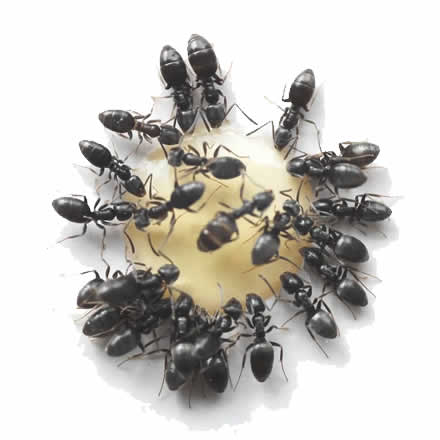

Ant Baits - Effective Pest Control Method
Ant Control Tip
Pest controllers often say that applying two different formulations is nothing but a waste of money, and this can be a good rule to live by. There is a huge chance that you will be able to solve your ant problem without the use of insecticidal sprays and dust. However, using insecticides could help prevent any future ant activity. To find out more, consult our team on (02) 8007 4666.
Some basic rules of using insecticide sprays are as follows:
- Non-repellent formulations are often superior to repellent formulations such as synthetic pyrethroids. This is because ants will go through the non-repellent insecticide unknowingly. Examples of non-repellent actives and formulations are Bendiocarb, Fipronil, Indoxacarb and Chlorfenapyr.
- The sprays need to be applied to the base of walls, fences and garden beds.
- Sprays should be re-applied after the rain.
- Insecticidal dust needs to be applied to roof voids as well.
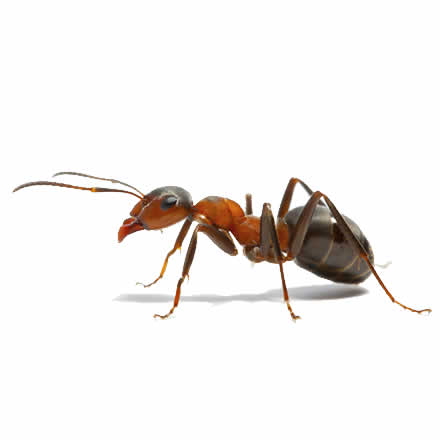

Ant Closeup
Why are there ants in my home?
In Sydney, everyone has had house ants at one point or another. These so-called sugar ants have earned their name because of the type of food they are known to eat, sweets. Like many animals and even humans themselves, ants enjoy the sugary stuff as they are a great energy source. The high energy density is consistent throughout this food group, which is why it strongly appeals to ants.
The thing is, the typical ant diet is not restricted to sweets. They consume so many other things that can be found outside your kitchen. Fungus, small insects, and silicone common in bathrooms are just some of the ingredients in their meal plan.
Identifying The Problem
Small black ants might be comparatively harmless, but still, you don't want them making a home out of yours, do you? For people who maintain cleanliness at home, it is incredibly frustrating not to get rid of ants. Unfortunately, it is becoming more common to discover an army of ants who have set their sights beyond the kitchen and dining areas.
If you have spotted ants in your bathroom, do not fret. Take your lead from Masters Pest Control Sydney and follow their trail to see where they lead you. Most likely, they were lured in there by the various chemical odours your bath may have. Also, the smells coming from your shower drains are inviting to them.
If your drain is clogged, it will contain stagnant water and fermented human hair. This creates a moist environment that ants thrive in. As a bonus, bathrooms also give them freestanding water.
Know Your Ant Species
The majority of ants who make their way to your bathroom belong to two species carpenter and pharaoh. Carpenter ants are drawn to wood and moisture, while pharaoh ants do not discriminate among different food sources.
With so many different species found in Australia, it is important to keep in mind that not all ants are the same. Pinpointing which species you have in your home allows you to formulate an effective plan for ant removal. If you can't seem to get rid of ants yourself, then it's time to hire an ant killer in Sydney ants pest control.

